For "Travel Tuesday":
Another place to visit before we leave The Texas Hill Country is the "Highland Lakes Chain", Inks Lake and Longhorn Cavern.

"The Texas Highland Lakes is a chain of seven reservoirs in Central Texas formed by several dams on the Colorado River. This portion of the river winds southeast from its headwaters near the border of Texas and New Mexico to Matagorda Bay and the Gulf of Mexico. The dams provide flood control and are used to generate hydroelectric power.
The lakes and dams are (from west to east, upstream to downstream):
- Buchanan Dam — Lake Buchanan
- Inks Dam — Inks Lake
- Wirtz Dam — Lake LBJ
- Max Starcke Dam — Lake Marble Falls
- Mansfield Dam — Lake Travis
- Tom Miller Dam — Lake Austin
- Longhorn Dam — Lady Bird Lake
The Colorado River, which had a history of major flooding, especially in the City of Austin, was "tamed" by the construction of the dams in the Texas Hill Country. Engineers used the hills to form the lakes' basins.
All of the dams were constructed by the Lower Colorado River Authority during the 1930s and 1940s, following two unsuccessful attempts to construct a dam upstream from Austin.
The City of Austin then constructed Longhorn Dam and formed a seventh lake in the chain, Lady Bird Lake, in 1960 largely to help beautify the city and to form a cooling pond for Seaholm Power Plant, a no longer used natural gas-burning power plant just north of the river."
____________
The Highland Lakes
"The Highland Lakes are about as good as it gets in Texas and they offer lots of fun things to see and do. This chain of lakes is made up of Lake Buchanan, Inks Lake, Lake LBJ, Marble Falls Lake, Lake Travis, Lake Austin, and Town Lake.
Located in Central Texas, the Highland Lakes region is a collection of seven lakes and the ten or so surrounding communities. The composition of the landscape is unique; it blends natural beauty with blooming metropolitan districts. In fact, the downtown and urban areas are home to some of the fastest growing attractions in the state.
Here is the list of Texas Outside's favorites in the Highland Lake area: Lake Austin for scenic boating, fun restaurants, and music on the water; Horseshoe Bay Resort has excellent accommodations and fantastic golf; Ram Rock Golf Course at Horseshoe Bay or River Place in near Lake Austin; Inks Lake State Park is one of the best campgrounds in Texas and Emma Long City Park has sites right on Lake Austin; Carlos and Charlie's restaurant and the party cove is where the action is on Lake Travis; Longhorn Cavern State Park is fun for the entire family; Lost Creek Vineyard has some excellent wine; hiking in Ink Lakes State Park; Canyon of the Eagles Lodge and Nature Park is an excellent weekend or week long vacation spot; and the Town Lake Bike Trail is an excellent for the whole family."
_____________
"Lake Buchanan, in particular, is renowned for affluent bass fishing. Reasons for its popularity among anglers surpass superior fish population density.
The lake harbors distinct embankments of sand, rock, and ledge at grand and shallow depths.
There are coves thick and thin with marine growth. This exceptional variance in setting allocates the development of diverse sea life."
_____________
The Highland Lakes are seven reservoirs in central Texas formed by dams along the Colorado River. Built from the 1930s to the '60s for flood control and hydroelectric power, the lakes are now the recreational crown jewels of the region. Starting about 70 miles northwest of Austin, the lakes snake southward along the original serpentine course of the river, ending in Austin.
1. Lake Buchanan
The 22,000-acre Lake Buchanan is the northernmost in the Highland Lakes chain. In the cooler months, you may spot bald eagles soaring over the lake. The Vanishing Texas River Cruise is a popular way to tour the lake. It departs from the Canyon of the Eagles Nature Park and Resort. The resort is operated by the Lower Colorado River Authority (LCRA), which also runs a campground at Black Rock Park on Lake Buchanan. The lake is well known for its top-notch fishing opportunities, particularly striped bass and catfish. For a more upscale option, you can head to Fall Creek Vineyards on the northwest shore and sample a little Texas wine.
2. Inks Lake
Inks Lake State Park is the main attraction at this 837-acre lake. Surrounded by beautiful pink granite hills, Inks lake is maintained at a consistent level, so it's not significantly affected by the area's frequent droughts. Deer, turkey and quail may be spotted throughout the park. Anglers frequently catch bass, crappie and catfish in Inks Lake. Canoes and paddle boats can be rented at the park store. Accommodations range from primitive campsites to limited use cabins.
3. Lake LBJ
Most of the land around Lake LBJ is privately owned, so you may have to fork out a little more cash to enjoy this 6,500-acre lake, particularly if you stay at a fancy place like the Horseshoe Bay Resort. Sunset Point RV park occupies a prime spot along a mile of shoreline. The resort has its own boat ramp, boat slips and a protected swimming area. Lake LBJ Resort and Marina has a wide variety of accommodations, ranging from 600-square-foot rooms to the 2,200-square-foot LBJ Presidential Suite. They also rent pontoon boats, jet skis and kayaks.
4. Lake Marble Falls
This narrow, 600-acre lake is excellent for water skiing or otherwise cruising around in a boat. It's the smallest lake in the Highland Lakes chain, and most of the acreage around the lake is privately owned. Hampton Inn on the Lake offers great views of the water, plus free breakfast every morning. Make sure you stop in for a piece of pie at the Blue Bonnet Cafe in Marble Falls. Southern Living magazine named the restaurant one of the top 10 places for pie in Texas. Chocolate meringue is the best seller, but you also can't go wrong with pecan pie.
5. Lake Travis
Covering 18,600 acres, Lake Travis offers plenty of room to roam and countless recreational opportunities. The lake was designed primarily for flood control, which means the water level can rise and fall significantly depending on rainfall. If you're looking to get rowdy, or just enjoy quality people-watching, steer your boat to Devil's Cove. Several boats are often tied together to create a kind of floating party. Expect to see speed boats, boats with slides, lots of beer drinking and occasional partial nudity. For a more kid-friendly outing, visit The Oasis restaurant, which features an entire hillside of terraced decks and world-class sunset viewing. The hillside erupts in applause when the sun drops below the horizon.
6. Lake Austin
Located on the west side of Austin, Lake Austin is surrounded by multimillion-dollar homes perched above limestone cliffs. For a day at a world-class spa, head to Lake Austin Spa and Resort. If you're not swimming in money, you can still enjoy the lake at Emma Long Metropolitan Park, which many locals refer to as simply "city park." It has two boat ramps, volleyball courts, a sandy beach and 66 campsites. On Sunday afternoons in summer, many boaters wind down at the Hula Hut, where they can pull right up to slips attached to the restaurant's pier. It can get crowded, but it's a laid-back place to enjoy a fruity drink and eat Polynesian-influenced Mexican food.
7. Lady Bird Lake
Running through the heart of Austin, Lady Bird Lake is encircled by a 10-mile hike-and-bike trail that's always buzzing with activity. The lake is the southernmost tip of the Highland Lakes chain. Formerly known as Town Lake, it was renamed in honor of Lady Bird Johnson after her death. She played a major role in transforming the lake and the trail into a vibrant recreational area that still retains much of its original natural beauty. Gas-powered motor boats are prohibited on the lake, so it's mostly populated by kayakers and stand-up paddlers on surfboards. Kayaks, paddle boats and stand-up paddle boards can be rented at the Rowing Dock, on the north shore near Austin High School. On summer evenings, you can watch 1.5 million bats emerge from the Congress Avenue Bridge.
_____________
"A little over an hour northwest of Austin, Inks Lake State Park offers a pristine hill country experience. Visitors enjoy swimming, fishing, camping and hiking. There's even a scenic 9-hole golf course."
INKS LAKE
About 8,000 years ago, prehistoric peoples lived and worked here along the banks of the Colorado River. Later, Spanish and Anglo settlers built communities in the area. A dependable water source, abundant fish and game, and the area’s natural beauty combined to make this an inviting location. Those same features bring people to the shores of Inks Lake today.
For early Hill Country residents, the river proved as much a danger as a blessing.
The Colorado River, the largest river entirely within the state of Texas, has a 900-mile course, through which almost 600 billion gallons of water flow in a typical year. Steep slopes and thin, rocky soils channeled runoff into the river, causing frequent, devastating floods.
Created as a means of flood control, Inks Lake is the second in a series of six lakes which make up the “Highland Lakes Chain.” Two dams form the boundaries of Inks Lake—Buchanan Dam to the north, and Inks Dam to the south. Built by the Lower Colorado River Authority (LCRA) at the height of the Great Depression, the construction not only improved flood control but provided employment for as many as 1,500 people.
The Texas State Parks Board originally acquired much of the acreage from the LCRA in 1940. The decision to gift the State Parks Board with the property was part of a larger plan, endorsed by local business leaders, to aid development of the Colorado River. The flood control project on the Colorado River was a signature issue of U.S. Rep. (and future President) Lyndon B. Johnson, who once stated, “Of all the endeavors on which I have worked in public life, I am proudest of the accomplishments in developing the Colorado River.”
____________
RN CAVERN STATE PARK-LONGHORN CAVERNThe geologic history of Longhorn Cavern is complex, and the theories don’t all agree. It is believed that the limestone was
deposited some 450–500 million years ago on the floor of a shallow tropical sea which covered most of Central Texas. Another 150 million years passed before the cavern itself began forming. Between 280 and 300 million years ago, mountain-building forces shifted under Central Texas in an event called the “Llano Uplift.” During this upheaval, faults and fractures formed in the flat-lying limestone. Water began flowing through the cracks, dissolving the limestone and eventually forming Longhorn Cavern and many caves like it.
During the last million years, the water deposited a thick layer of mud and debris in the cave. Early visitors were restricted to a small area due to this debris. Some of the earliest visitors were the area’s prehistoric peoples, who used the large room next the main entrance for shelter. Anglo settlers discovered the cavern in the mid-1800s and began mining bat guano that was used in manufacturing gun powder during the Civil War.
Many stories and legends developed around Longhorn Cavern, the most persistent being that famous outlaw Sam Bass used the cavern as a hideout in the 1870s. There is no evidence that Sam Bass ever visited the cave, but stories like this one drew tourists as early as the turn of the 20th century. By the 1920s, the main room served as a dance hall and concert venue.
____________
GNEISS ISLANDS AND VERNAL POOLS
At Inks Lake, the pink rock outcrops jutting up through the surrounding limestone are Valley Spring Gneiss (pronounced “nice”), a pinkish granite-like metamorphic rock formed from recrystallized sedimentary rocks.
These gneiss “islands” support unique, localized and ecologically significant microhabitats. Over many hundreds of years, larger rocks are broken down into gravels and soil by the plants that grow in crevices and at the base of these formations. Outcrops support a wide array of wildflowers, grasses, forbs, mosses, lichens and ferns. Most of these plants are small, requiring a keen eye to see tiny flowers, interesting shapes and colors—well worth the search!
Shallow temporary rainwater basins called vernal pools form on rock outcrops. The thin layer of sand and organic material on the bottom of the pools sustains a great variety of aquatic plants which become dormant when the water dries up in summer. All that’s visible by mid-summer is a thin crust in a dry basin which regenerates with the next spring rain.
Some of these plants, such as rock quillwort and basin corn salad, are found only in this area of Texas, and nowhere else in the world. Dry, gravelly areas, shaded crevices and the outcrop base may support wild onions, carpets of spikemosses, sedges, native grasses, spiderworts, and several arid land fern species.
Bare rock outcrops offer outdoor laboratories for the study of plant succession, soil development, interesting microhabitats and their plant communities. Many of these outcrops are quarried or developed throughout Central Texas. Inks Lake State Park protects a valuable representative of this special natural community"
From me: There is so much to see in TX, it would take a lifetime. These last few weeks here on "Travel Tuesday" we have just scratched the surface. There are many beautiful places to visit in the Hill Country, which is just one of the varied areas in TX.
____________
Yesterday:
Jay called to say he was going to help their neighbor, so I wasn't expecting to have to go get him. The internet cable went out early in the morning, so I unplugged each of the connections and plugged them back in again, which usually works, but it didn't. So I got involved in trying to get the Live Writer drafts where I wanted them on the new computer, as Live Writer can be done off line. But it is a long process to get each of the drafts out of the Web Logs on to the side bar, where I want them. And I have a lot of drafts!
Then Jay called again to say he didn't have to go to the neighbors' until later, so Misty and I went to get him as Misty needed her little walk anyway. Jay and I just did a few things to the cargo trailer, like installing the utility sink faucet and soap dispenser on the sink. It's easier before the sink is mounted in the countertop. We can't install the sink yet as we are having trouble with one of the water tank connections, and it's easier to do with the sink out of the way. Then I took him home.
When I called the cable company, I found out that I had unplugged and plugged back in, in the wrong order. One learns a lesson every day.

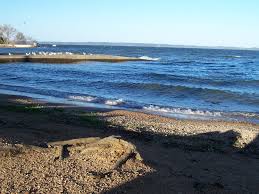


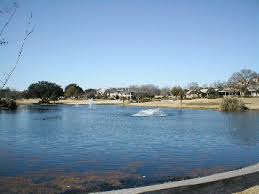
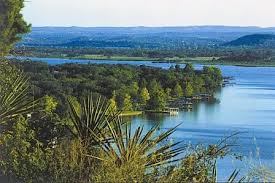.jpg)
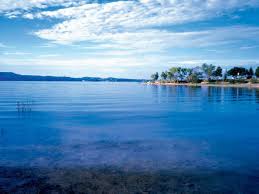
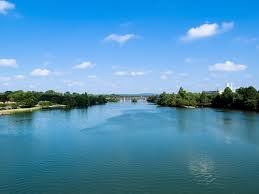


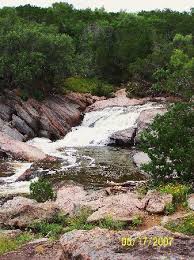
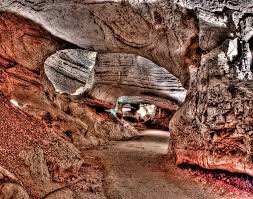



What? You didn't know you had to unplug before you could plug back in (grin).
ReplyDeleteOh, DD, thanks for your comment!
ReplyDeleteNo, I was suppose to reset the cable modem BEFORE I reset the router. I knew that, but had done it backwards anyway. CRS?
Happy Tails, and Trails, Penny, TX